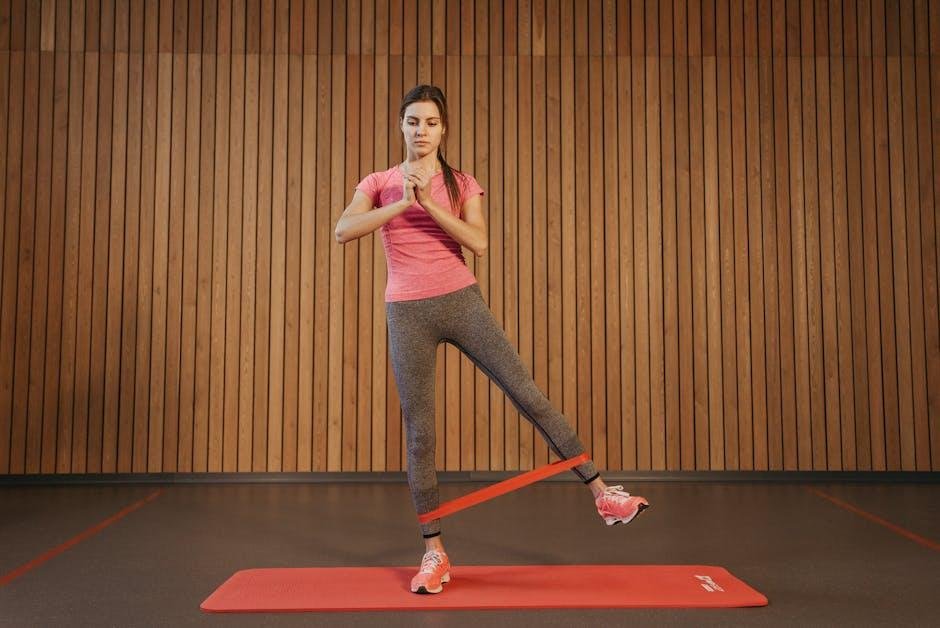What to Know About Form, tempo, and Reps: A Guide to Effective Movement
In the world of fitness, where trends come and go, three key elements remain steadfast in their importance: form, tempo, and repetitions. As the pillars of any workout routine, they play a crucial role in determining the effectiveness of your training and the safety of your movements. whether you’re a seasoned gym-goer or just stepping onto the fitness scene,understanding these dynamics can elevate your performance and enhance your results. In this article, we’ll delve into the intricacies of proper form to prevent injuries, explore the rhythm of tempo to maximize muscle engagement, and decode the importance of repetitions in building strength and endurance. Join us as we unravel the essential components that can turn an ordinary workout into an extraordinary journey towards fitness mastery.
Understanding the Importance of Proper Form for Injury Prevention
Achieving the right technique during your workouts is vital for safeguarding your body against injuries. Whether you’re lifting weights, performing bodyweight exercises, or engaging in cardio routines, proper form ensures that your body is aligned correctly, distributing the load evenly across your muscles and joints. This alignment not only maximizes the effectiveness of the movements but also reduces the risk of acute injuries and chronic pain by preventing undue stress on specific body parts. Neglecting this aspect might lead to compensatory movement patterns,which can result in overuse injuries over time.
to effectively leverage the benefits of exercising, it is essential to understand key elements such as tempo and repetitions. Manipulating tempo— the speed at which you perform each phase of an exercise— can enhance muscle engagement and ensure control throughout the movement. Consider these structured techniques when planning your workouts:
| Tempo Phase | Description | recommended Reps |
|---|---|---|
| Elevation | Lift the weight steadily | 2-3 |
| Pause | Hold at the peak for stability | 1-2 |
| Lowering | Slowly bring the weight down | 3-4 |
Keep in mind that the recommended repetitions may vary depending on your specific goals—strength building, endurance, or muscle hypertrophy. In any case,maintaining the integrity of your form must remain a priority. Prioritizing form over quantity will not only enhance your workout efficiency but also contribute to long-term physical health and resilience.

Mastering Tempo to Maximize Workout Effectiveness
Understanding and mastering tempo can significantly enhance your workout effectiveness by optimizing how your muscles engage during each repetition. tempo refers to the speed at which you perform each phase of an exercise, and adjusting it can influence both strength building and muscle hypertrophy. A slow and controlled tempo allows for greater time under tension, which can lead to increased muscle growth, while a fast tempo can focus on power and explosiveness, ideal for performance enhancement. To achieve the desired results, consider employing various tempo patterns for your lifts, such as:
- Concentric Phase (lifting): The upward movement, where you exert force.
- Eccentric Phase (lowering): The downward movement, where you resist gravity.
- Pause Reps: Brief holds at the peak or bottom position to increase difficulty.
To illustrate effective tempo practice, refer to the table below, which outlines different tempo techniques and their potential benefits:
| Tempo Technique | Benefits |
|---|---|
| 2-1-2 (2 seconds up, 1 second hold, 2 seconds down) | Enhances muscle engagement and control |
| 3-1-3 | Increases time under tension for hypertrophy |
| 1-0-1 | Improves power and explosiveness |
| 0-2-0 (pause at peak) | Builds stability and strength at critical positions |
By playing with these tempo variations and incorporating them into your workouts, you can tailor each session to align with your specific fitness goals. Whether you aim for strength, endurance, or explosiveness, adapting your tempo allows for a well-rounded approach to training, keeping your muscles challenged and engaged in new ways.

Choosing the Right Number of Reps for Your Fitness Goals
When it comes to selecting the optimal number of repetitions for your workouts, it’s essential to align your choices with your specific fitness goals. Whether you aim to build muscle,enhance endurance,or improve strength,the rep range can dramatically influence your results.As an example, if your primary focus is hypertrophy (muscle growth), aiming for 6 to 12 reps per set is frequently enough recommended. Conversely, for strength training, where the goal is to lift heavier weights, sticking to 1 to 5 reps can yield favorable outcomes.Endurance athletes, on the other hand, shine in the 12 to 20+ reps range, emphasizing stamina over sheer strength.
in addition to reps, consider the importance of tempo during your workouts. the speed at which you lift weights can alter the intensity and effectiveness of your training sessions.Slower tempos can increase time under tension, promoting muscle growth, while faster lifts might enhance explosive power and athletic performance. Below is a simple table that outlines the rep ranges with their corresponding fitness goals:
| Fitness Goal | Rep Range |
|---|---|
| Hypertrophy | 6-12 reps |
| Strength | 1-5 reps |
| Endurance | 12-20+ reps |

Balancing Form,Tempo,and Reps for Optimal Performance
To achieve optimal performance in any workout routine,it is essential to understand the delicate relationship between form,tempo,and repetitions.Form is the foundation of every exercise; it ensures that your body engages the right muscles and reduces the risk of injury. When executing movements, focus on maintaining a neutral spine and aligned joints. Proper form not only enhances effectiveness but also increases workout longevity. A few common tips to keep in mind include:
- Keep your shoulders back and down.
- Engage your core throughout the movement.
- use a full range of motion.
Tempo refers to the speed at which you perform each phase of an exercise.Manipulating tempo can significantly affect muscle engagement and fatigue, thus maximizing your training results.A slower tempo can increase time under tension, leading to greater muscle growth, while a faster tempo may enhance explosive strength. Aim for a balanced approach by varying your tempo across workouts. Below is a simple table illustrating different tempo types and their intended effects:
| Tempo Type | Effect |
|---|---|
| Slow Tempo | Increased Muscle Hypertrophy |
| Fast Tempo | Enhanced Explosive power |
| Controlled Tempo | Improved Muscle Control |
Lastly, the number of reps performed plays a crucial role in your training outcome. Depending on your goals, you may focus on higher reps for endurance or lower reps for strength. It’s essential to listen to your body and adjust the volume accordingly. You might find having a structured approach beneficial; consider organizing your workouts based on rep ranges such as:
- 1-5 reps for strength training.
- 6-12 reps for hypertrophy.
- 12+ reps for endurance.
By harmonizing these three elements—form, tempo, and repetitions—you pave the way for not only improved performance but also a more enjoyable training experience.
The Way Forward
mastering the intricacies of form, tempo, and repetitions is essential for anyone looking to elevate their fitness journey. As we’ve explored, understanding the nuances of each component can lead not only to improved performance but also to a lower risk of injury and enhanced overall results. Whether you’re a seasoned athlete or just starting out, taking the time to fine-tune these elements will set the foundation for lasting progress. Remember, every gym session is an possibility to connect with your body and refine your technique. so, as you step into your next workout, keep these principles in mind, and embrace the path to a stronger, more informed you. Happy lifting!
